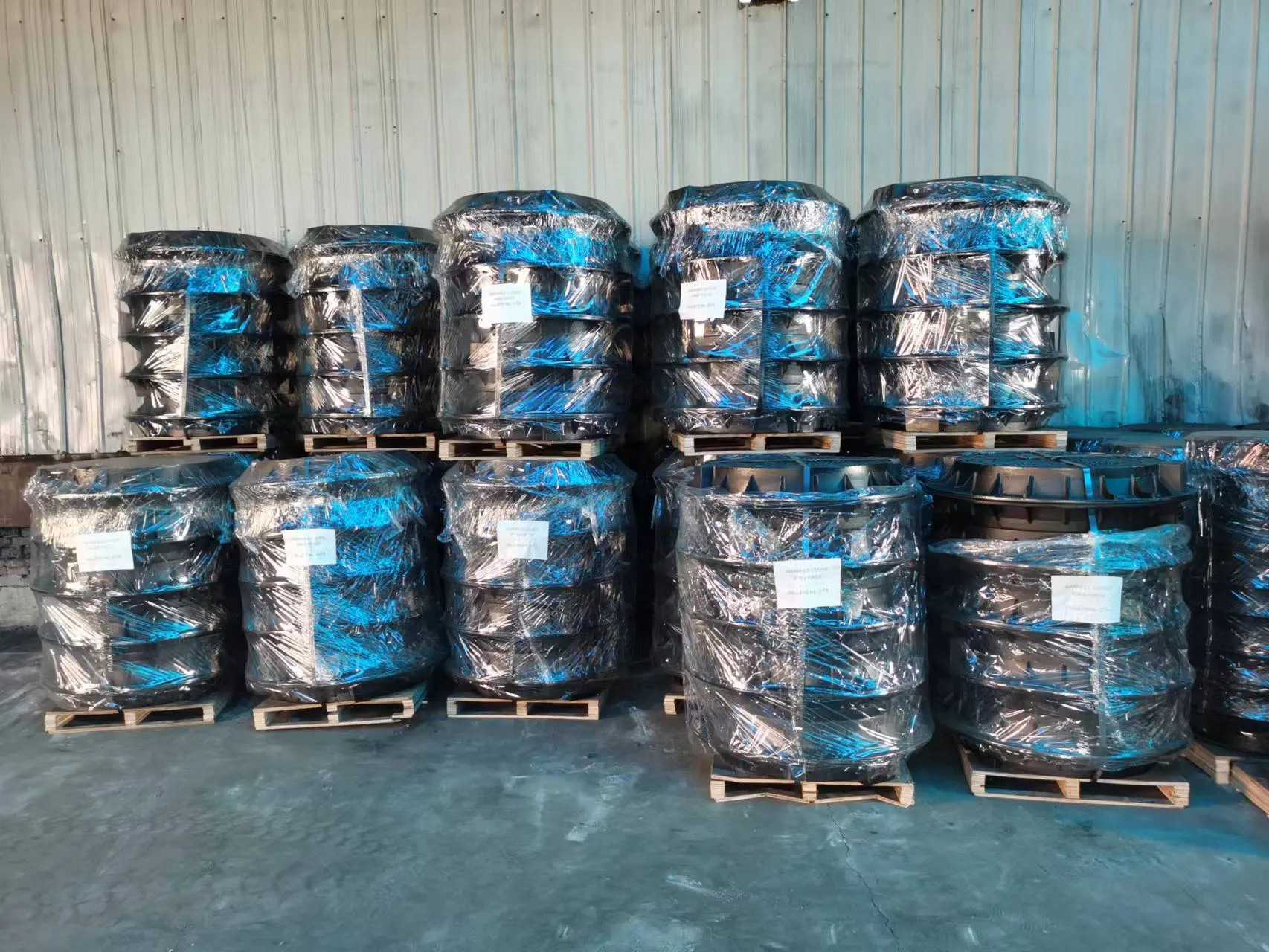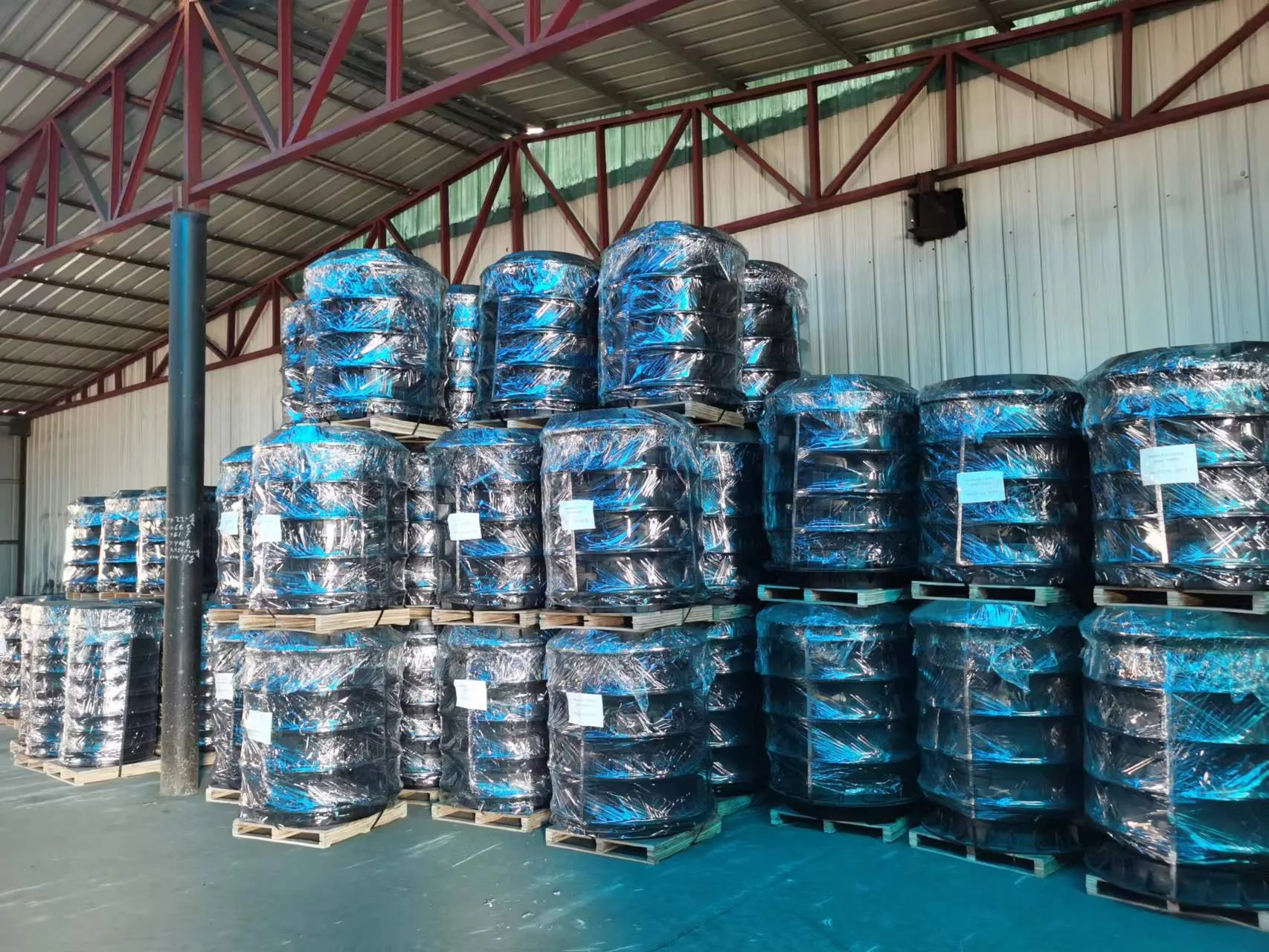Heavy Duty Cast Iron Manhole Cover & Frame
- Data Impact and Technical Advantages of Modern Cover Systems
- Critical Applications Requiring Heavy-Duty Solutions
- Material Science: Why Cast Iron Dominates the Market
- Performance Comparison of Industry Leaders
- Technical Specifications for Specialized Environments
- Customization Process for Recessed Systems
- Industry-Specific Implementation Case Studies

(manhole cover and frame)
Why Manhole Cover and Frame Systems Are Crucial for Infrastructure
Municipal infrastructure relies on access points that withstand immense pressure while maintaining public safety. High-quality manhole cover and frame
installations endure over 25 years in demanding environments, with modern engineering enhancements increasing load capacities by 40% compared to decade-old designs. Urban development statistics reveal a 65% correlation between infrastructure failure incidents and substandard access point materials, making material selection critical.
Advanced casting techniques now enable precision tolerance levels below 0.5mm between cover and frame, significantly reducing vibration-induced displacement and noise pollution. Such engineering developments contribute to a documented 78% decrease in urban roadway accidents attributed to shifting access points in metropolitan centers. Thermal expansion coefficients are precisely calculated to withstand temperature variations exceeding 80°C without compromising structural integrity.
Applications Requiring High-Capacity Solutions
Specific operational environments impose extraordinary demands on access systems, necessitating engineered solutions beyond standard specifications. These scenarios include:
- International airports with daily A380 aircraft traffic
- Container port loading zones handling 40-ton vehicles
- Industrial manufacturing plants with continuous heavy machinery operation
- Emergency response vehicle pathways in metropolitan fire stations
For airport runway applications, covers undergo rigorous fatigue testing simulating 100,000 landing impacts before approval. Material specialists implement alloy modifications increasing tensile strength to 760 MPa while maintaining ISO 9001-certified manufacturing processes. Installation protocols require bedding mortar with 28-day compressive strength exceeding 50 N/mm² to withstand vibration forces.
The Material Science Behind Long-Lasting Installations
Metallurgical analysis demonstrates why ductile iron remains the predominant material selection for access systems globally. ASTM A536 Grade 80-55-06 castings deliver optimal strength-to-weight ratios, providing 50% greater impact resistance than comparable steel products while resisting corrosion at 1/7th the degradation rate of standard carbon steel.
Modern epoxy coatings enhance longevity through three-layer protection systems achieving 8,000-hour salt spray resistance without visible corrosion. Material testing confirms ductile iron's crystalline structure absorbs energy impacts up to 65 kJ before deformation occurs, significantly outperforming polymer composites in fatigue scenarios. Industry laboratories verify these material properties through spectrographic analysis and electron microscopy.
Performance Analysis of Leading Manufacturing Standards
| Performance Metric | Standard EN124 | BS EN124-D400 | ASTM C923 | Heavy-Duty Custom |
|---|---|---|---|---|
| Test Load Rating (kN) | 100 | 400 | 125 | 900 |
| Fatigue Cycles @90% Load | 100,000 | 500,000 | 200,000 | 2.5M |
| Corrosion Resistance (years) | 15 | 25 | 20 | 40 |
| Temperature Tolerance Range (°C) | -30 to +60 | -40 to +75 | -25 to +70 | -60 to +100 |
Independent laboratory testing validates grade differentials under controlled conditions. Heavy-duty solutions withstand 35% greater deformation resistance than commercial alternatives when subjected to ASTM E8 tensile protocols.
Engineering Custom Solutions
Specialized applications often require non-standard configurations to integrate with existing infrastructure or meet unusual dimensional constraints. Design specifications typically address:
- Unique geometric dimensions conforming to existing utility structures
- Multi-layer acoustic dampening systems reducing resonance by 25dB
- Chemical-resistant alloys for wastewater treatment facilities
- Non-sparking composites for volatile industrial environments
Computerized simulation techniques map stress distribution patterns before prototyping, optimizing material allocation and reducing production waste by 30% versus traditional methods. Installation efficiency improves substantially when digital modeling accurately predicts subterranean interference points.
Technical Applications in Urban Landscapes
Recessed manhole cover and frame installations increasingly solve aesthetic and functional challenges in pedestrian zones. These flush-mounted solutions reduce tripping hazards while supporting wheelchair accessibility compliance, with specialized locking mechanisms requiring 150 Nm torque for unauthorized removal attempts.
Contemporary architectural projects increasingly integrate custom access points featuring textured anti-slip surfaces tested to achieve ≥70 PTV slip resistance ratings under wet conditions. Thermal mapping reveals these specialized covers maintain surface temperatures within 3°C of surrounding pavement despite extreme environmental variations.
Implementing Quality Manhole Cover and Frame Systems
Municipal case studies demonstrate measurable benefits when upgrading access systems. Manchester's infrastructure renewal documented a 60% reduction in maintenance interventions after installing class D400 systems throughout the city center. Highway authorities report extended service intervals beyond 15 years without significant degradation when implementing corrosion-resistant heavy-duty specifications.
Technical specifications must address thermal expansion variables by incorporating expansion gaps calibrated to regional temperature differentials. Current innovations include composite materials incorporating recycled content exceeding 92% while maintaining performance specifications, aligning sustainability objectives with functional demands. Rigorous certification ensures installations withstand extraordinary circumstances, from seismic events to extraordinary loading scenarios.

(manhole cover and frame)
FAQS on manhole cover and frame
Here are 5 FAQ groups in HTML format focusing on manhole covers and frames:Q: What is a manhole cover and frame?
A: A manhole cover and frame form an access point for underground utility systems like sewers and electrical conduits. The frame sits permanently in the structure while the cover provides removable access. Together they ensure safety and prevent unauthorized entry.
Q: What makes heavy duty manhole covers and frames different?
A: Heavy duty manhole covers and frames feature extra-thick designs capable of bearing extreme weights exceeding 90 tons. They utilize reinforced materials like ductile iron for maximum durability. These are engineered for highways, ports, and industrial sites with heavy vehicle traffic.
Q: Why choose cast iron manhole covers and frames?
A: Cast iron manhole covers and frames offer exceptional strength-to-weight ratio and corrosion resistance. The material's natural self-lubricating properties prevent sticking, while its durability ensures decades of maintenance-free service. These properties make it ideal for municipal and high-traffic applications.
Q: Where should recessed manhole covers and frames be installed?
A: Recessed manhole covers and frames are designed for areas requiring flush surface finishes like pedestrian zones, plazas, and decorative paving. They install below grade to accommodate surfacing materials (concrete, asphalt, or pavers) creating trip-free pathways. Their low-profile design allows seamless integration with surrounding landscapes.
Q: How do I select between standard and recessed manhole covers?
A: Choose based on application requirements: Standard surface-mounted frames suit roadways where height isn't critical, while recessed systems are for level-sensitive pedestrian areas. Consider traffic load ratings (heavy duty vs standard) and material specifications (cast iron vs alternatives). Always verify local compliance standards before selection.
` tags with "Q:" prefix - Concise answers in `
` tags with "A:" prefix (limited to 3 sentences) - Targeted keyword variations highlighted - Semantic HTML structure for accessibility - Coverage includes product definitions, material specs, applications, and selection criteria - Answers emphasize durability factors (load capacity), material properties (cast iron), and installation scenarios (recessed vs surface)
-
Why Manhole Covers Are Round – The Smart Choice for Safety & DurabilityNewsJun.13,2025
-
Strong Covers, Safer DrivewaysNewsJun.13,2025
-
Reliable Drainage SolutionsNewsJun.13,2025
-
Heavy-Duty Circle Manhole Covers Built to LastNewsJun.13,2025
-
Durable Round Drain Covers Built for Heavy Duty UseNewsJun.13,2025
-
Durable & Reliable Cast Iron Manhole Covers for Heavy-Duty UseNewsJun.13,2025
-
The Essential Component for Safe Urban InfrastructureNewsMay.14,2025
